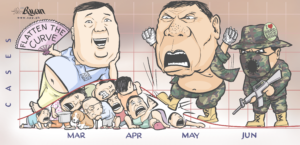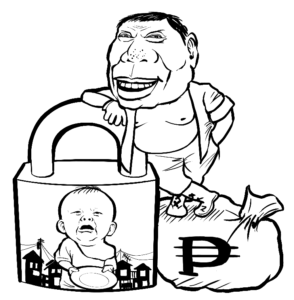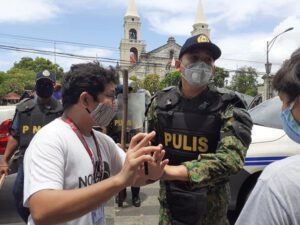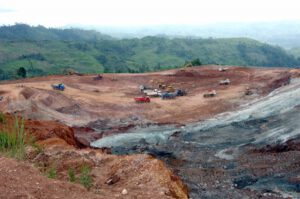Luyo-luyo in food production

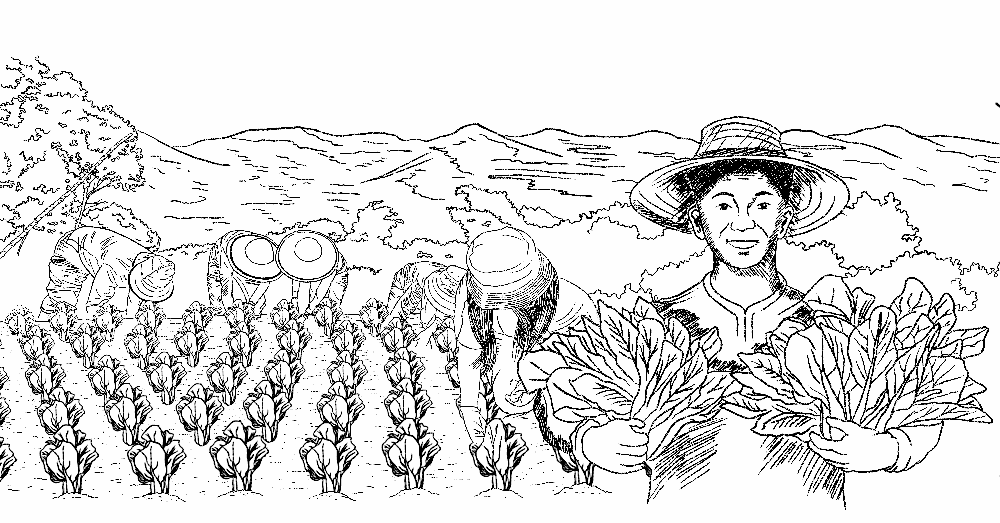
Tatay Lery estimated that his rice stock, his share from the harvest in an adjacent barrio, would only last a week to feed his family. His son who works in Manila could not remit money to him because he lost his job due to the lockdown.
The lockdown has further cut the income of farmers in Barangay Dasig. Most of the barrio’s farmlands are devoted to coconut production and the area was also devastated by typhoon Tisoy in December 2019. This makes it difficult for families of members of the local Party branch including that of Tatay Lery and his collective Tatay Utê to buy rice.
Such situation underscores the importance of the Party’s food production campaign to address hunger which was aggravated by the lockdown. In Barangay Dasig and the entire guerrilla front, farmers cultivated the land collectively to help address the food shortage.
A production campaign has since been conducted in the guerrilla front. Local chapters of the Pambansang Katipunan ng mga Magbubukid and Makibaka restrengthened the said campaign in the early 2010s. These functioned as cooperatives and allocated parcels of land for vegetable production, animal husbandry and fisheries.
Chapter groups implemented a mutual aid system called “luyo-luyo.” Mutual aid groups called “grutuls” were also formed to help smaller and weaker chapter groups in production.
At the onset of the campaign, Party cadres encouraged villagefolks to rely on their own strength. In the past, some of the projects, chapter groups and grutuls were focused on earning profits. The groups were able to sell their produce, while at the same time providing them food. They were able to get some people to invest in the cooperative, but for various reasons, they still lost profits.
Particularly in Barangay Dasig, the grutul was composed of Tatay Utê and seven other small peasants. They are all beneficiaries of the agrarian revolution and were given the right to till their own farmlands. These, however, have remained unproductive due to past typhoons. The said grutul was among the those formed in the barrio and barangay clusters.
They were already able to clear an area at the foothills of Mt. Salig. If the rains won’t come, they can already set the area to fire to prepare the land for farming. They have also already prepared pechay and string beans seeds which they plan to plant first. These were solicited by NPA fighters who operate at the guerrilla zone. They also provided residents with rice to immediately help them amid the crisis.
Once they are able to start planting, they will only need to count a few weeks until they can harvest their produce. In the long run, the grutul aims to plant cassava, banana, rice and taro.
The production is no longer aimed at earning profits but in feeding the families of farmers. That is why they will only produce what is enough for them. Surplus produce, if there is any, can be sold to other villagefolks.
With regards to how coconut planters in Barrio Dasig will source rice, the guerrilla front committee is already coordinating the production campaigns in all clusters operating within the area. In the case of Barangay Dasig, they may produce an additional volume of vegetables which they can trade with rice which, on the otherhand, is the main product of another barangay in the lowlands. Palay production was also designed to harvest enough rice supply which can be traded for vegetable products from upland villages.
Tatay Lery has decided to join the grutul, to which Tatay Utê belongs, even without yet seeing the fruits of their collective effort. Party cadres are expecting to encourage other peasants to organize more grutuls, or better yet, reactivate chapter groups that have weakened.
Barangay Dasig has accumulated lessons from its rich revolutionary experience. Tatay Lery no longer needs to wait for the end of the lockdown and the money which his son remits to him. He has realized even farmers within the barrio can carry out measures to address their hunger.

